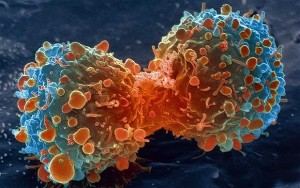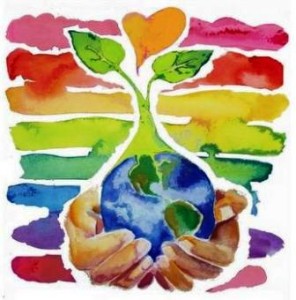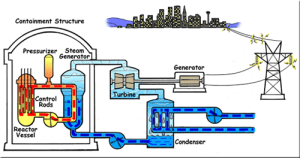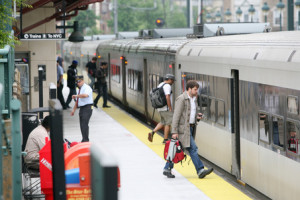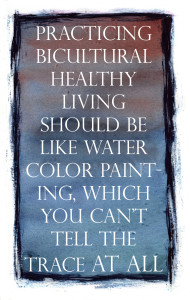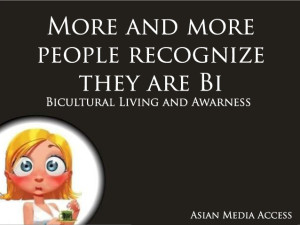Here is a recap from one of the radio talk show done by Asian Media Access. This time around it is focused on the Vietnamese community with issues that arises in health care, culture, and community. It is great way to get direct insights on how these problems can be discussed, addressed, and shared with others.
Asian Media Access: Radio Talk Show
February 14, 2012 9:30am
14443 Armstrong Boulevard Northeast
Ramsey, MN 55303
Radio Talk Show Summary
Guests: Kieu Anh (KA), Anh Ha (AH), Amy Yen (AY), Thiep Nguyen (TN), Nancy Le (NL), Thinh Nguyen (THN)
Host: Phuoc Tran (PT), librarian at Hennnepin County Library
PT: Welcoming guests. Introduced self and the topic of discussion: A look at health disparities in the Vietnamese community in Minnesota as part of the Health Disparities project of Asian Media Access
KA: Introduced self- happy to be part of the project
AH: Introduced self- had been in Minnesota more than 4 years, happy to share her experiences on health care issues
AY: Introduced self-very happy to join the group in discussing health disparities and services of the Vietnamese community in the Twin Cities
TH: Introduced self-had been in Minneapolis, Minnesota more than 30 year, retired
NL: Introduced self- had been in Minnesota for a long time and so happy to discuss about health disparities in the Vietnamese community
THN: Introduced self-happy to be part of the discussion
PT: A recent survey of 103 Vietnamese people over 40 years showed that only 70% had an annual check-up. Why?
- NL: No health insurance coverage; language barrier (Many immigrants and seniors have low educational level in addition to the language barrier they face when trying to communicate with doctors and health care providers); habit of avoiding doctors in fear of finding out that they might have a serious illness
- KA: Co-Payments and health insurance premiums are high and expensive; no health insurance coverage from employer; language barrier; the lack of transportation hinders Vietnamese seniors from accessing their health care provider even if they have health care coverage
- AY: Main reasons for not having annual check-up: having health insurance coverage, but people were busy and ignored it; lack of health coverage; tend to view health care as necessary only when they’re sick.
- NL: Raise questions about patients were kept in the waiting room for too long before they see the doctor/ urgent care
- PT: Co-Payments and health insurance premiums are high and expensive.
- TN: – paid $500 for health insurance after his retirement and it was too much with today’s economy and decided not to buy it if having a good health.
– Medicine prices were often high and not affordable in America, so it was common to see people buy medicine in Vietnam at a much lower price
– Language barrier: Many immigrants and seniors have low educational level in addition to the language barrier they face when trying to communicate with doctors and health care providers
PT: Questions on health disparities in the Vietnamese Community in Minnesota?
- NL: Feel unreasonable to pay high cost of health insurance while they may not be utilizing it. Why they need to pay more co-payment in addition to high premium cost; rather pay for daily expenses to their children than pay high cost insurance. Co-Payments and health insurance premiums were high and expensive; the cumbersome paperwork required to take part in government insurance programs has also contributed to the lack of health care coverage for many Vietnamese people.
- AH: Not happy to pay high cost health insurance, but get limited services and high co-payment. Rather not having health insurance and buy medicine over the counter and have free mammogram services. Co-Payments and health insurance premiums are high and expensive. Couldn’t afford to buy health insurance
- NL: Sorry for jumping to the discussion:
Medicare health insurance VS employee health insurance: limited services and doctor’s appointment in Government health insurance.
- PT: Time for advertisement. We’ll come back to our next question.
2 minutes Break Time
- PT: Welcome back and discuss on co-payments and affordability on health insurance.
- TN: Suggestions on health disparities: Vietnamese non-profit organization/ program, like First Call-United Way for free, updated information and referral program; free clinic or low cost clinic for new comers and low income families.
- PT: Share info on Phillips Neighborhood Clinic, a free clinic operated by University of Minnesota health professional students. All students are supervised by licensed clinicians. No Appointments or Insurance Necessary. Spanish Interpreters are available at all times. No Appointments or Insurance Necessary; Give a Kid’s Smile (free dental exam for k-12);
- KA: No one knew about these free clinic/services. Lack of resources /information in the Vietnamese community
- PT: Great idea to have more resources published /advertised to the community via media outlets
- AH: Why there was no interpreters in these free clinics while there was a interpretation phone line /interpreters in regular doctor office/clinic?
- TH: Lack of sharing resources, no knowledge of such free clinic/services
- AY: No knowledge of medical procedures/practices: thought they can see any doctor they wish or visit any hospital they choose; not happy to ask for a referral to see a specialist
- NL: Not counting a lot of waiting time in the doctor’s office/ emergency room. Most people didn’t see the importance of preventive health services. They were unaware of what their health status was due to a habit of avoiding doctors in fear of finding out that they might have a serious illness
- PT: Too much paperwork, no knowledge of medical procedures/practices shine people away from the doctor’s office
- TN: It depended on health care policy some didn’t require a referral to see a specialist
2 minutes Break
- PT: Welcome back. A need of resources and free clinic, free medicine and how to do it in the Vietnamese Community.
- THN: We should have different media sources, local magazines, newspapers for seminating health information and resources
- KA: In addition, information should be shared and brought to social and community gatherings every week
- PT: Great idea to come to the weekly elderly gathering to share these resources
- TN: A need of tailoring programs that fit both the audience’s need and the community’s resources.
- NL : Development of health education, such as flyers, brochures and media materials in Vietnamese
- AH: A need of developing a health issues website to cover all counties so everyone, including patients, new comers, health care providers, can use it as first resource.
- PT: Significant use of traditional health practices VS Western Medicine. Why?
- KA: Tendency to use herbal and traditional medicine among the elders. Use it as alternative or complementary medicine. Herbal treatments are the most popular form of traditional medicine and safe or carry no risk for harm. They are easy to buy and affordable, 10 times cheaper than medicine.
- TN: Ensure the use of safe, effective and quality products and practices and watch for side effects
- PT: Language barrier, no knowledge of medical terminology, cultural differences between patients and doctors are among the health disparities in the Vietnamese community
- AY: Most of the clinics and hospitals have interpretation services while one might not find this service in a private doctor’s office.
- THN: There were some complaints on interpretation services that weren’t good enough, lack of efficiency/ accuracy. All educational interpreters should have training, certification, and basic qualifications as required by the regulations of the state and by the interpreting industry
Solutions suggested by participants
- Free clinic low cost coverage
- Community physician who worked for a non-profit clinic that served low income, uninsured and underserved families
- Increase interpretation services
- Development of health education, such as flyers, brochures and media material in Vietnamese
- Reaching out to seniors through various venues, including weekly meetings, community gatherings/events, ethnic media (radio ,T.V, newspaper)
- Create a newsletter or website in Vietnamese that list updated resource/ news on health issues
- Getting the word out locally “word of mouth”
- Recruit community volunteers from within the Vietnamese community to be day doctors or health providers
PT: Thanks to everyone for their participation.


